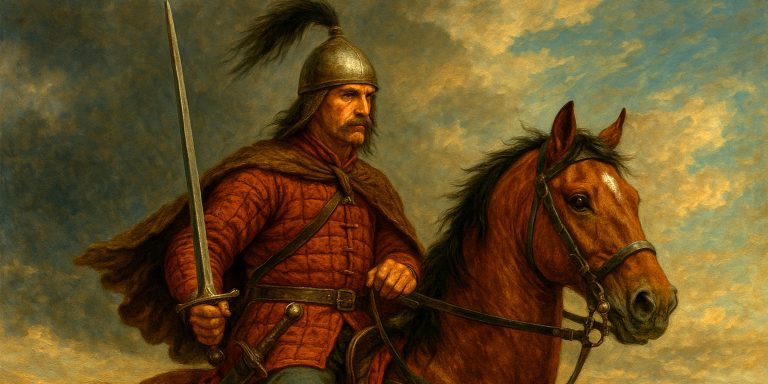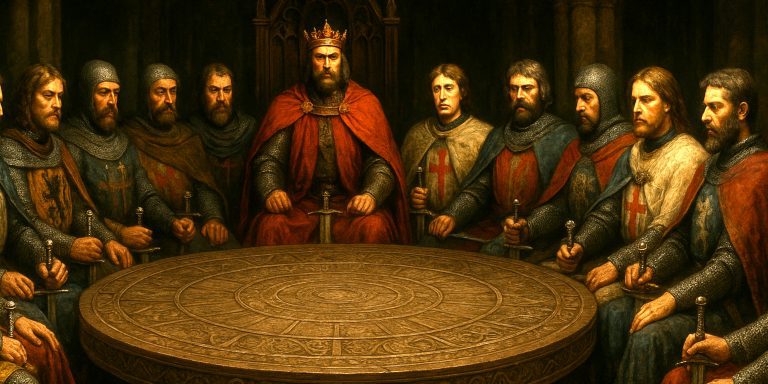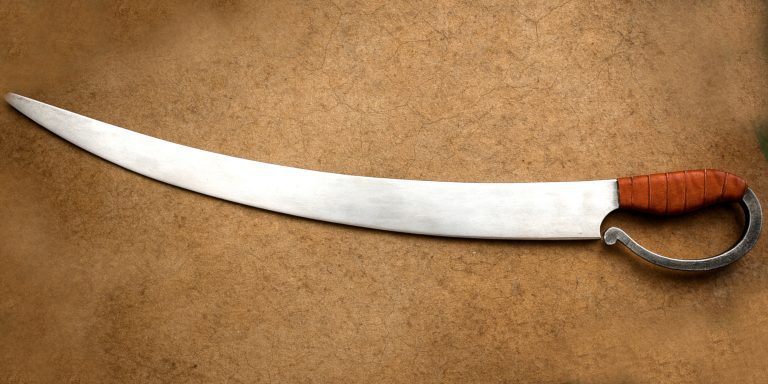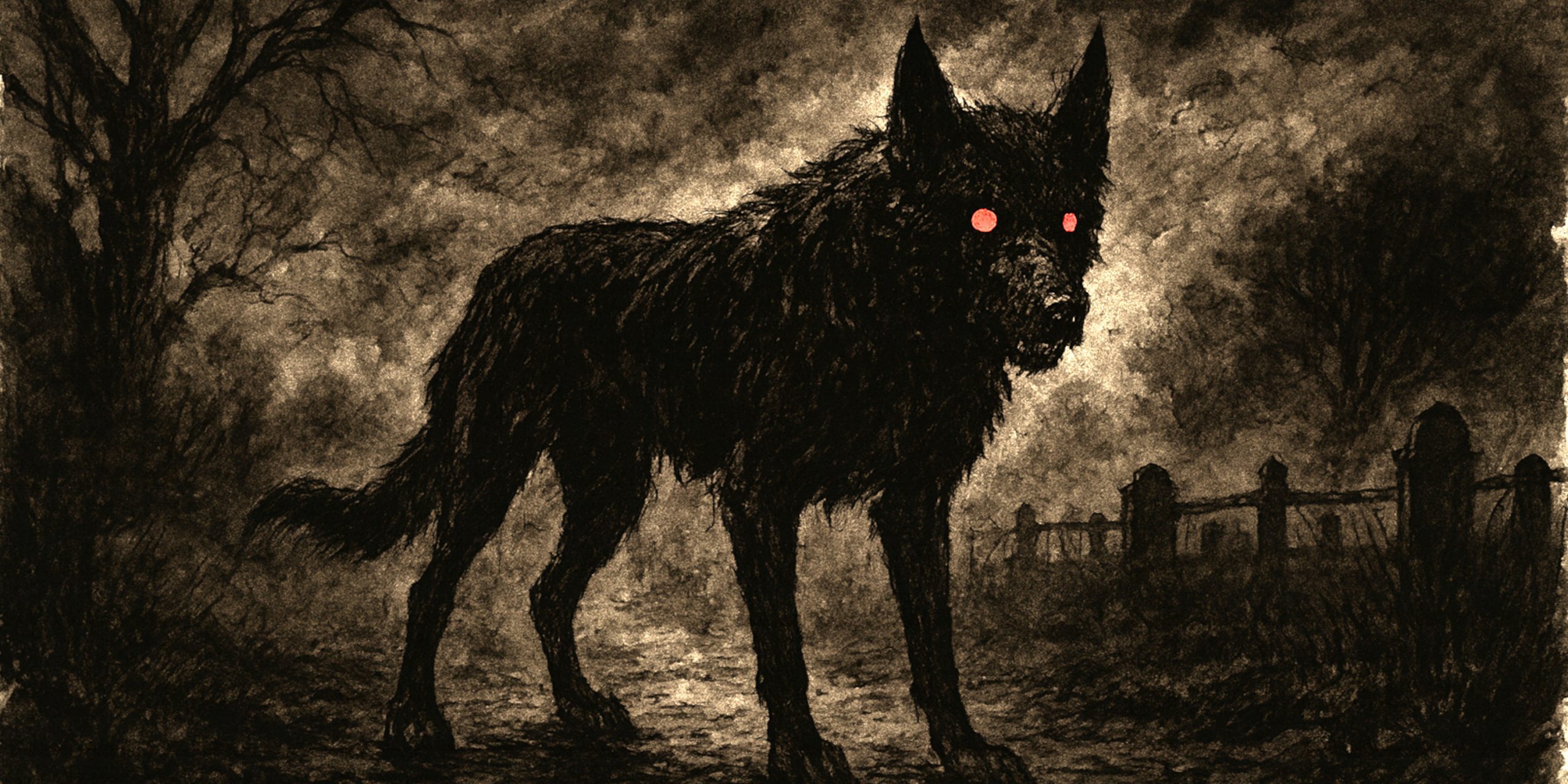
The medieval world was not short on fear. When plague, famine and war failed to fill that gap, the imagination did. Medieval Europe teemed with creatures said to stalk forests, haunt graveyards and slither beneath monastery floors. These beings reflected the concerns of their time: faith, disease, and the ever-present dread that the world was one sin away from ending.
Below is a tour of the most notorious creatures from medieval folklore, the kind that turned travellers back to their inns and monks to their prayers.
The Wyvern
Half dragon, half serpent, and entirely inconvenient for farmers, the wyvern appeared throughout English and French heraldry. Typically depicted with two legs and a barbed tail, it symbolised destruction, pestilence and war.
- Origins: Western Europe, particularly England and France
- Symbolism: Plague, greed, or impending doom
- Appearance: Winged reptile with a forked tail and venomous bite
The wyvern’s distinction from a dragon was its anatomy, not its manners. Medieval texts described them as feeding on livestock and occasionally on knights foolish enough to think faith outweighed scales.
The Revenant
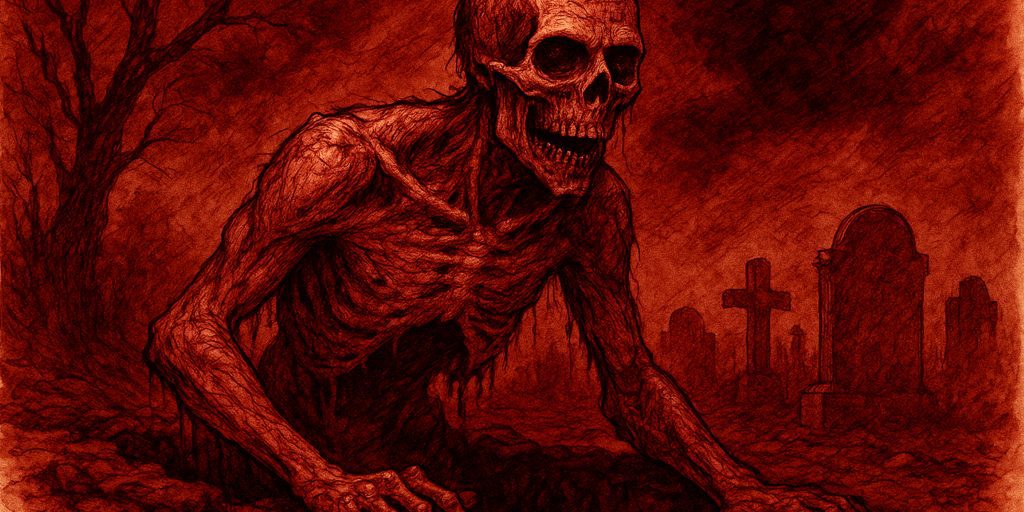
The medieval revenant was not the poetic, brooding vampire of later fiction. It was the bloated, rotting corpse of a sinner who refused to stay buried. Chronicles from Yorkshire to Brittany recorded graves disturbed and villages plagued until the revenant was burned or decapitated.
- Origins: England and France, 12th–13th centuries
- Nature: Undead, driven by hatred or unfinished business
- Defeat: Burning, staking, or simply remembering to pray
In truth, the revenant likely emerged from post-plague trauma and shallow graves. But to medieval villagers, the explanation was far simpler: wicked souls came back.
The Basilisk
The basilisk was a snake of such malevolence that its gaze could kill, which made it particularly hard to domesticate. It was said to be hatched from a cock’s egg warmed by a toad, an arrangement that already sounds like a medieval in-joke.
- Origins: Classical myth, adapted through medieval bestiaries
- Abilities: Deadly gaze, toxic breath, arrogance
- Weakness: The crow of a rooster or a mirror
Bestiaries recorded that the basilisk’s venom could taint an entire field. It was also one of the few creatures the Church was content to liken to Satan, which says more about the Church than the serpent.
The Barghest
The barghest was a massive black dog with glowing eyes, an omen of death prowling the moors of northern England. To meet one was to know someone nearby would soon die, possibly you.
- Origins: Northern England, especially Yorkshire
- Appearance: Black hound, sometimes with chains or flaming breath
- Behaviour: Silent following, vanishing upon confrontation
The barghest was a grim reflection of rural isolation, a myth born from the creak of gates and the long shadows of northern nights. Yet even now, hikers on the Pennines still look twice when the wind howls.
The Nuckelavee
Hailing from the Orkney Islands, the Nuckelavee is possibly folklore’s most revolting creature. A skinless, horse-like demon fused with a rider, its exposed muscles glistened with seawater and disease. It hated mankind for its smoke, crops, and general existence.
- Origins: Orkney, Scotland
- Nature: Sea demon, bringer of blight
- Weakness: Freshwater, which it could not cross
The Nuckelavee was said to poison streams and wither crops merely by breathing. Given the Orkney climate, it hardly needed help.
The Redcap
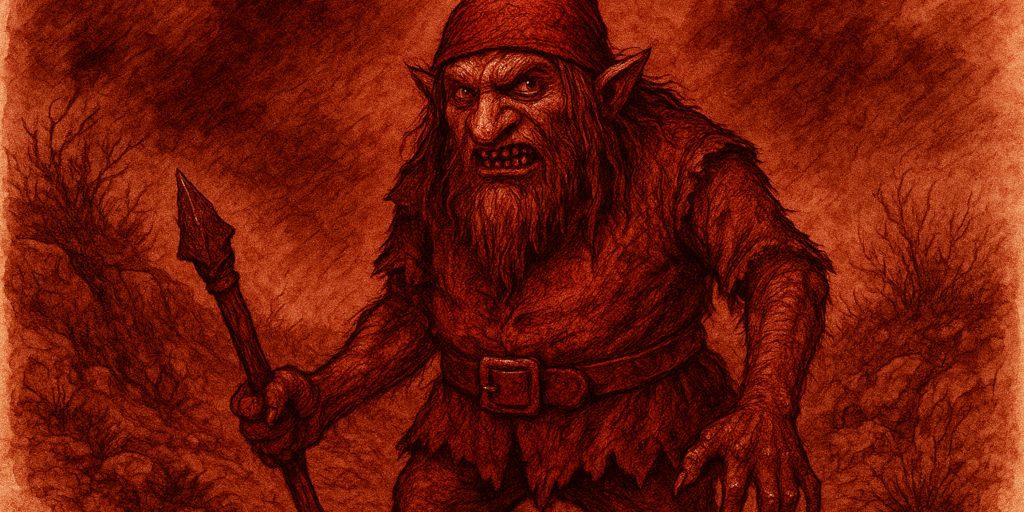
In the crumbling ruins of the Anglo-Scottish borderlands lived the Redcap, a goblin who dyed his hat in human blood. He was fond of ambushing travellers, especially those foolish enough to wander into abandoned castles.
- Origins: Scottish Borders
- Appearance: Short, wiry, red-eyed creature
- Defeat: Reciting scripture, preferably loudly
It was said that if a Redcap’s hat ever dried, he would die. One assumes he took this as motivation rather than a moral dilemma.
The Church Grim
The Church Grim was a spectral black dog that guarded graveyards. Unlike its wilder cousins, this spirit was protective, ensuring thieves and witches left the dead in peace. According to legend, the first person buried in a new churchyard became its Grim, forever bound to patrol it.
- Origins: Northern Europe, especially Scandinavia and Britain
- Role: Guardian of the dead
- Symbolism: Duty, sacrifice, divine protection
It was one of the few medieval creatures that managed to be terrifying and loyal at once, a sort of clerical nightmare with a moral compass.
The Cockatrice
A close cousin of the basilisk, the cockatrice mixed dragon wings with a rooster’s head and a personality to match. It killed with its breath and gaze, but could be slain by hearing a rooster crow.
- Origins: Western Europe, late medieval period
- Abilities: Petrification, poison, killing everything in sight
- Weakness: Sound of a rooster or seeing its reflection
Its absurdity did not prevent it from being feared, particularly by anyone with chickens.
The Black Shuck
The Black Shuck haunted the coasts of East Anglia, described as a giant hound with eyes like burning coals. In 1577 it reportedly burst into two churches in Suffolk, killing parishioners and leaving scorch marks on the door.
- Origins: East Anglia, England
- Symbolism: Death and storm omens
- Appearance: Black dog, often enormous, sometimes headless
It was less a ghost than a reminder that life in medieval England was already terrifying enough without dogs from hell.
Where to See Medieval Creatures in Art and Architecture
The Middle Ages left behind a stone bestiary. From cathedral gargoyles to illuminated manuscripts, Europe immortalised its fears and fascinations in art. These monsters still cling to spires, leer from capitals, and crawl across margins as though waiting for someone to notice them again.
Below are some of the best places to encounter medieval creatures in their natural habitats, carved, painted, or glowering in quiet defiance of modern taste.
Exeter Cathedral, England
Exeter Cathedral is a masterclass in Gothic excess, and its misericords are particularly vivid. Among the angels and saints lurk grotesques that blend man, beast and satire. You will find wyverns biting themselves, dragons wrestling with men, and the occasional hybrid creature whose creator was clearly having a long day with a chisel.
- Notable creatures: Wyverns, dragons, grotesques
- Era: 13th–14th century carvings
- Tip: Look beneath the choir stalls where the carvings were meant to amuse the monks, not the congregation
York Minster, England
One of the most ornate cathedrals in Europe, York Minster’s stonework teems with medieval imagination. Its gargoyles and bosses include snarling hounds, bat-winged monsters, and serpents that twist into floral patterns.
- Notable creatures: Black Shuck-style dogs, serpents, winged beasts
- Era: Mostly 14th century
- Curiosity: Local folklore claims a spectral hound still prowls the Minster’s shadowed precincts
Notre-Dame de Paris, France
Before the fire, the gargoyles of Notre-Dame were among the most famous faces in Europe. Half-drainpipe, half-demon, they were designed to keep rainwater from eroding the walls while also reminding Parisians of what awaited sinners.
- Notable creatures: Chimeras, dragons, grotesque guardians
- Era: 12th–14th centuries
- Symbolism: Protection through fear, a medieval speciality
Rosslyn Chapel, Scotland
This 15th-century chapel is a stone fever dream. Among the intricate carvings are green men, dragons, and demons interlaced with vines. The chapel’s masons clearly enjoyed merging Christian symbolism with older pagan imagery, as if hedging their spiritual bets.
- Notable creatures: Dragons, serpents, green men
- Era: 1446–1480
- Interesting note: Local folklore connects Rosslyn’s carvings to Templar myths and Norse sagas, which is optimistic but entertaining
St Mary’s Church, Beverley, England
Often overlooked, St Mary’s hides one of the earliest carvings of a grinning cat said to have inspired Alice in Wonderland’s Cheshire Cat. Alongside it are winged monsters, gargoyles and grotesques that blend humour with menace.
- Notable creatures: Grinning cat, gargoyles, grotesque hybrids
- Era: 14th–15th centuries
- Observation: The medieval craftsman’s humour was often darker than the clergy’s sermons
The Cloisters Museum, New York (Met Cloisters)
A modern collection housed in medieval architecture, The Cloisters preserves original stonework and artefacts from across Europe. Its capitals and tapestries capture unicorns, dragons and demons in a blend of faith and fancy.
- Notable creatures: Unicorns, dragons, satyrs
- Key exhibits: The Unicorn Tapestries
- Context: Proof that even in the pious Middle Ages, people still adored a good monster story
Canterbury Cathedral, England
Home to both relics and revenants, Canterbury features bestiary-inspired carvings that line its nave and cloisters. Look for lions, griffins and dragon-like forms peering from the shadows.
- Notable creatures: Griffins, dragons, grotesques
- Era: 12th–15th centuries
- Trivia: Pilgrims may have feared purgatory, but they clearly enjoyed fine monster art along the way
Rila Monastery, Bulgaria
In Eastern Europe, medieval imagination took a more apocalyptic turn. The frescoes of Rila Monastery teem with serpents, beasts, and fiery demons, vivid reminders that judgement was both inevitable and highly illustrated.
- Notable creatures: Demons, serpents, infernal beasts
- Era: 14th–15th centuries
- Impression: Less “folklore,” more “eternal damnation in full colour”
Medieval Bestiary: Symbolism and Morality
The medieval bestiary was not simply a catalogue of strange animals. It was a moral textbook disguised as a zoo. Every creature, real or imagined, carried a lesson about sin, virtue, or divine order. The monks who copied these manuscripts were less concerned with zoological accuracy and more with spiritual messaging. To them, the habits of the lion or the vices of the serpent were simply mirrors for mankind’s own behaviour, which was seldom flattering.
Below are some of the most emblematic creatures and what they meant in the moral imagination of the Middle Ages.
The Lion – Christ and Kingship
The lion was regarded as the king of beasts and, by medieval logic, a perfect metaphor for Christ. Bestiaries taught that lion cubs were born dead and brought to life after three days by their father’s breath, a direct nod to the Resurrection.
- Symbolism: Christ’s power, divine authority, protection of the righteous
- Moral lesson: True strength lies in mercy and leadership, not cruelty
- Artistic use: Often carved beside royal effigies and church doors to symbolise divine guardianship
It is a charming thought, though anyone who had met a real lion would know mercy was not its strongest quality.
The Unicorn – Purity and Sacrifice
The unicorn, that elusive blend of horse and horn, was interpreted as a symbol of purity. It could only be tamed by a virgin, at which point hunters would strike it down, a story that medieval theologians found suspiciously convenient for their sermons on chastity and temptation.
- Symbolism: Purity, innocence, Christ’s sacrifice
- Moral lesson: The pure of heart are vulnerable but sacred
- Depiction: In illuminated manuscripts, the unicorn often rests in the lap of the Virgin Mary
Its popularity in courtly art suggests the medieval elite enjoyed the idea of innocence being both beautiful and short-lived.
The Basilisk – Sin and Death
The basilisk was the walking embodiment of sin: poisonous, proud, and fatal to look upon. Medieval bestiaries delighted in describing how it could wither grass, kill men, and rot stone. Its antidote was the crowing of a rooster, an ironic echo of Peter’s denial of Christ.
- Symbolism: Sin, death, the corruption of the soul
- Moral lesson: Pride and vanity are the surest poisons
- Depiction: Frequently used in sermons as a warning against arrogance
If you were a monk with limited artistic skill, drawing a basilisk was an easy way to show moral decay. After all, the uglier the beast, the stronger the message.
The Dragon – Satan and Chaos
To the medieval mind, dragons were not misunderstood reptiles but the devil with scales. They hoarded treasure, breathed fire, and inhabited desolate places, all qualities the Church found uncomfortably relatable.
- Symbolism: Satan, greed, temptation
- Moral lesson: Evil guards nothing of true value
- Depiction: Often slain by saints such as George or Margaret, representing victory over sin
The dragon’s enduring fame owes much to this symbolism. Even now, it represents the eternal struggle between courage and corruption, albeit with better special effects.
The Phoenix – Resurrection and Renewal
The phoenix, said to burn itself to ashes before being reborn, offered a hopeful contrast to all the hellish beasts. It became a metaphor for Christ’s resurrection and the soul’s redemption through faith.
- Symbolism: Rebirth, salvation, eternal life
- Moral lesson: Through death comes renewal
- Depiction: Illustrated in gold leaf, usually rising from its own pyre like a divine fire hazard
For a culture surrounded by plague and death, the phoenix was an unusually optimistic metaphor, proof that medieval art did occasionally look up.
The Serpent – Deceit and Temptation
The serpent’s reputation never recovered from Eden. In the medieval bestiary, it embodied cunning, falsehood, and lust. Some versions claimed that snakes pressed their ears to the ground to avoid the songs of enchantment, an apt description of how sinners supposedly ignored God’s call.
- Symbolism: Deceit, corruption, temptation
- Moral lesson: Sin slithers in quietly and leaves teeth marks
- Depiction: Wrapped around trees, chalices, and occasionally bishops’ nightmares
Medieval scribes often made the serpent physically grotesque to ensure nobody missed the point.
The Pelican – Sacrifice and Redemption
In medieval belief, the pelican fed its young with its own blood, pecking open its breast to revive them. It was a powerful image of Christ’s sacrifice, though deeply inaccurate ornithology.
- Symbolism: Sacrifice, selflessness, divine love
- Moral lesson: True love gives of itself completely
- Depiction: Found in church windows and altar carvings, usually above the Eucharist
It remains one of the few medieval myths that manages to be touching and gruesome in equal measure.
The Moral Menagerie
To medieval thinkers, beasts were sermons in motion. The lion taught courage, the basilisk warned of sin, and the unicorn offered purity to a world that had little of it. These bestiaries turned creation into a moral code, a reflection of human frailty disguised as zoology.
They remind us that the Middle Ages did not separate the natural from the spiritual. A dragon was never just a dragon, and a serpent never only a snake. The medieval imagination saw the moral in the monstrous and the divine in the absurd. Perhaps that is why these creatures still haunt us: they were never just animals, but mirrors.
Legacy and Meaning
Medieval creatures were not born from idle imagination. They embodied plague, death, isolation and divine punishment. The wyvern symbolised war, the basilisk disease, and the revenant guilt. Together, they formed a menagerie of moral warnings for an anxious age.
Today they survive in heraldry, literature and local folklore, still growling from the edges of the map. Perhaps that is what the medieval mind feared most: that the darkness outside the walls was not empty after all.

